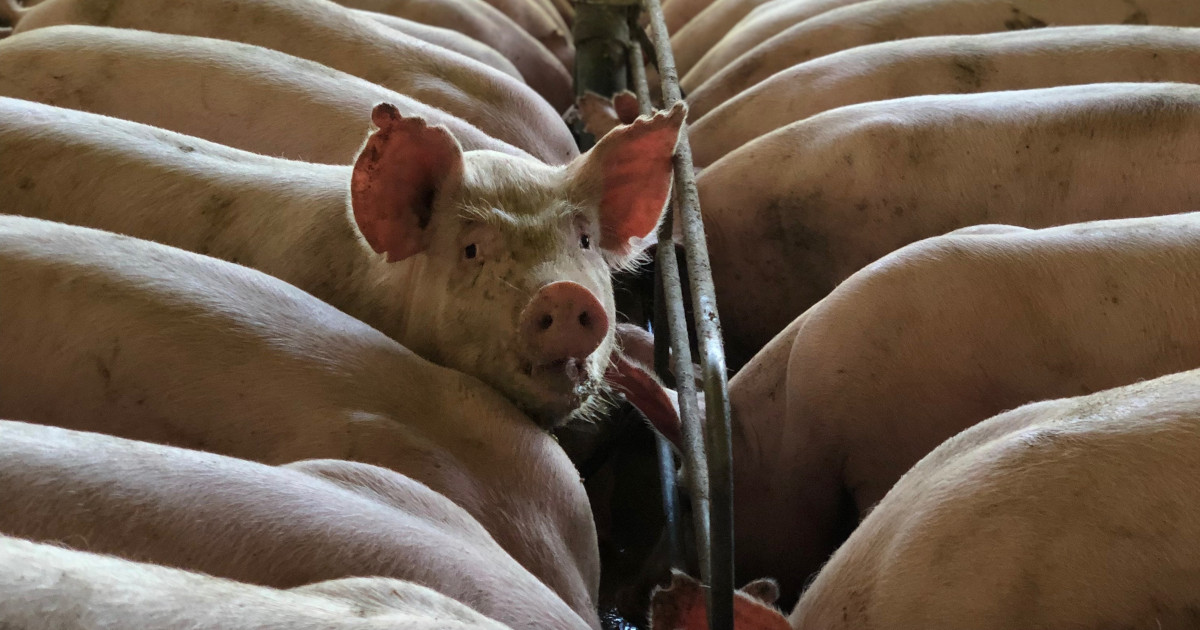
One CAFO Owner Produces 5 Million Polluting Pigs
Jeff Hansen’s hog farming is a story that is as old as time. The growth of his CAFO over the past 30 years produced over 5 million pigs brought to market in 2020. Pollution from pig CAFOs sends a steady stream of toxins into the surrounding air and nitrogen and phosphorus into the waterways.
May 1, 2021 | Source: Mercola.com | by Dr. Joseph Mercola
Jeff Hansen’s hog farming is a story that is as old as time. The growth of his concentrated animal feeding operation (CAFO) over the past 30 years produced over 5 million pigs brought to market in 2020.1 But, this is not a rags-to-riches story that people in Iowa are championing — unless, of course, you’re being paid to.
Since man began bartering for goods, and later developed a monetary system, there have been people more interested in acquiring wealth than in protecting their community. In the present time, this short-sighted, wealth-driven vision is often surreptitiously covered by a strong public relations campaign and underpinned with political contributions.
This describes the outcome of many individuals who have made their money on the backs of low paid workers and damaged communities. The siren song of growing wealth appears to cloud recognition of their responsibility for the human and environmental waste they leave behind. The history of Iowa Select Farms is one such story.
Hansen Takes Hold in Iowa
Vox2 tells Hanson’s story, which began like most other entrepreneurs’. Faced with a difficult and physically taxing situation, he developed labor-saving options that helped to lighten the load and manage the small herd of pigs he and his wife kept.
Then in the early 1990s he acquired a loan to build a business around providing automated systems to hog farmers. It wasn’t long before his small concern was bringing in $90 million a year to assemble confinement sheds where pigs were bred, raised and kept before slaughter.
To house large numbers of animals indoors, the buildings must be built over grates where manure and urine can fall into deep pools below the animals. The buildings also need powerful exhaust fans to send the ammonia-rich air outside. Without these fans, the animals would die within hours.
The growth of the hog barons in Iowa was fueled in part by trade agreements that opened the world market and economists who let it be known to Iowa legislators that if the state were friendly to agribusinesses that wanted to grow hog CAFOs, the potential for financial growth for the state could be massive.
Another factor in the growth of the industry was that large meat packers found buying consistently produced pigs was more profitable than purchasing from different independent growers. To attract CAFO producers, they offered locked-in prices that were not affected by market fluctuations.
By 1992, Hansen began keeping his own hogs and incorporated Iowa Select Farms. Within four years he had grown his herd from 10,000 sows to 62,000; by 1999 his 96,000 sows were producing 1.7 million pigs that he brought to market. It is not the Iowa Select Farms’ success that is at issue but, rather, the devastating impact it has on people’s health and the environmental impact throughout the state.
Yet, despite consistent pushback from communities throughout Iowa, the state legislators were unwilling to consider the long-term consequences, and instead appeared to focus on the short-term financial gains. For example, Gov. Kim Reynolds’ election was supported by a six-figure contribution from Hansen.
Reynolds is up for reelection in 2022 and she has spent her tenure in office supporting CAFO expansion in the state, which likely earned her another campaign contribution to support her reelection efforts.
Why Are Pigs Bad Neighbors?
The collection of manure and urine must go somewhere. One of the environmental hazards from CAFOs is the water pollution that results from excess nutrients in the waste lagoons.3 This leads to algae overgrowth in waterways, ultimately depleting oxygen in the water, killing fish and other marine life, and making the water unfit for use.
The industry claims this manure can be used as fertilizer in the surrounding farmlands,4 which are growing grain to feed the pigs. However, it sends a steady stream of nitrogen and phosphorus into surface and groundwater. This potentially spreads disease-causing organisms from the feces of animals that often are fed antibiotics to keep them in confined spaces.
It also delivers an unsustainable amount of nutrients into the waterways. For example, the dead zone in the Gulf of Mexico5 is the largest recorded dead zone in the world. It begins in the Mississippi River delta and spans more than 8,700 square miles. It is a result of “Nitrogen and phosphorus used as farm fertilizers flowing off farmlands and into the Mississippi River watershed.”6
Despite being treated with antibiotics, the hogs can spread diseases to humans. For example, the porcine deltacoronavirus, which was first identified in 2012 in China,7 has recently shown the potential to leap to humans.8 This sometimes-fatal virus causes diarrhea and vomiting in pigs.
Antibiotic-resistant diseases are also spread through CAFOs.9 Research published in Clinical Infectious Diseases in 201510 showed workers at pig farms are six times more likely to carry multi-drug resistant MRSA than those who are not exposed to CAFO pigs.
Studies have also demonstrated that MRSA is aerosolized outside and downwind of a pig CAFO,11 which bodes danger for those who are living near fields where the waste is being sprayed as fertilizer.
As Vox reports,12 residents in Iowa also must deal with piles of pig carcasses that litter the roadways, attracting flies, rats and vultures and contributing to the stench in the community. The growth of hog farming in the area has changed the balance of the population so pigs now outnumber people 7-to-1.
